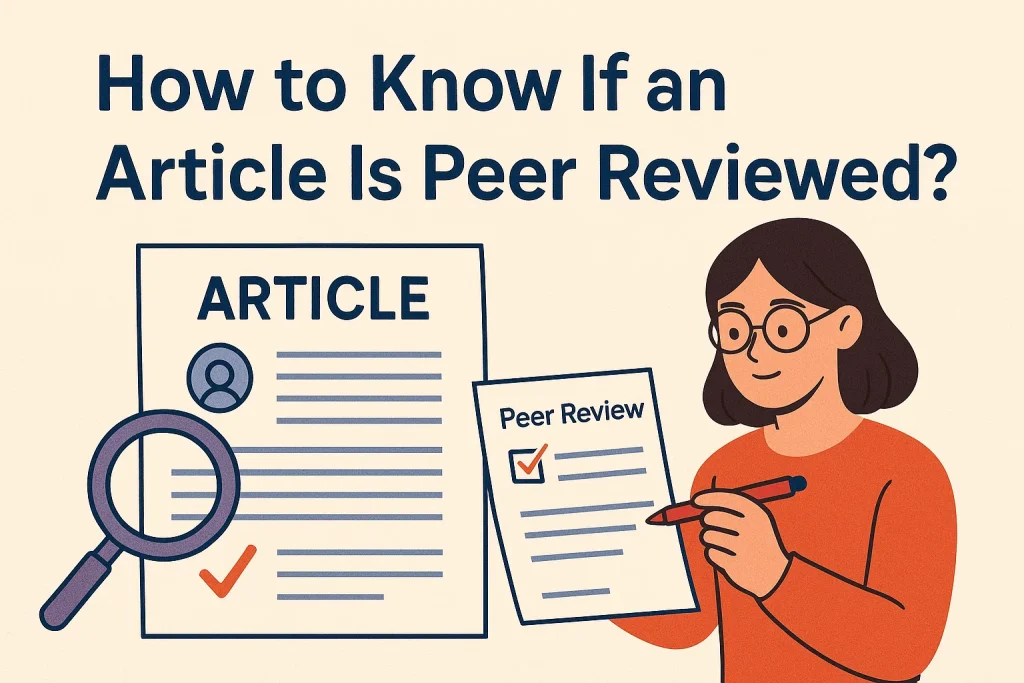Key Takeaways
- Check the journal’s website to confirm it follows a peer-review process.
- Use academic databases like PubMed or JSTOR and filter by “Peer-Reviewed.”
- Look for submission and acceptance dates in the article.
- Verify with the publisher or editorial policy if unsure.
Have you ever wondered if the article you’re reading is truly trustworthy? Knowing whether an article is peer reviewed can save you from misinformation and help you rely on credible sources.
But how to know if an article is peer reviewed? You can check the journal’s website or database listing (like PubMed or JSTOR) to see if it says the journal uses a peer-review process. Peer-reviewed articles also usually show submission and acceptance dates and follow a formal research format with references.
In this post, you’ll discover simple, clear steps to quickly spot peer-reviewed articles. By the end, you’ll feel confident about choosing reliable information every time.
Keep reading to unlock these easy tips, you won’t want to miss them!
How To Know If an Article Is Peer Reviewed?
Identifying peer reviewed articles can be tricky. You can confirm by checking journal’s website, article’s inside, or reference section. There are some characteristics of a peer reviewd journal.
Peer reviewed journals publish articles after experts check the quality. They focus on original research or detailed studies.
These journals often have strict rules for authors. The language is formal and technical. They include references to other research.
Most have an editorial board made of experts. The journal usually belongs to a university or a professional group.
Look for labels like “peer reviewed” or “refereed” on the article page. Some websites show the review date or process details.
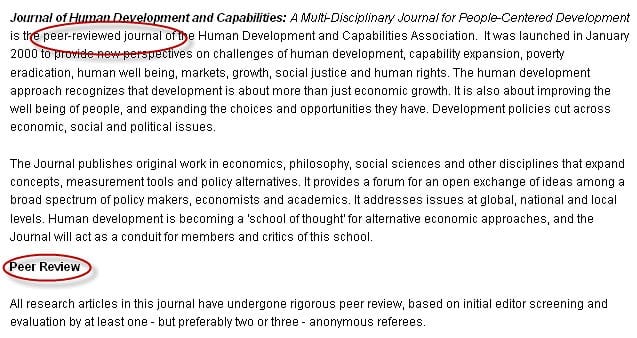
Credit: https://guides.library.oregonstate.edu
Articles often include an abstract summarizing the study. You may find a list of authors and their affiliations. References or citations at the end are common. Check if the journal’s website states a peer review policy.
These clues help confirm the article’s credibility.
Method 1: Using Library And Database Tools
Using library and database tools helps find peer-reviewed articles fast. These tools offer filters and trusted sources that make research easier. Knowing how to use them saves time and ensures quality information.
Filters And Search Options
Most libraries and databases provide filters to narrow search results. One common filter is “peer-reviewed” or “scholarly journals.” Selecting this option shows only articles reviewed by experts.
Use other filters like date, subject, or document type. These help find the most relevant and recent articles. Filters reduce extra reading and keep searches focused.
Trusted Academic Databases
Trusted databases host many peer-reviewed articles. Examples include JSTOR, PubMed, and Google Scholar. These platforms check articles before adding them.
Using these databases increases chances of finding reliable research. They also provide detailed information about the article and its authors. This helps confirm if an article is peer-reviewed.
Method 2: Checking The Journal’s Website
Checking the journal’s website is a reliable way to confirm if an article is peer reviewed.
Journals that use peer review usually share clear information about their review process online. This information helps readers understand the quality and credibility of the articles published.
Most journals provide details about their editorial standards and how articles are reviewed. This transparency shows their commitment to academic integrity. By exploring the journal’s site, you can find specific sections that explain these practices.
Editorial Policies
Editorial policies explain the rules the journal follows for publishing articles. Peer-reviewed journals often state these policies clearly on their website. These policies include the journal’s aim, scope, and ethical standards.
Check if the journal mentions a peer review policy in this section. It may describe the role of editors and reviewers. It can also explain how conflicts of interest are handled. Journals that detail these rules usually maintain high quality.
Submission And Review Process Details
This section describes how articles are submitted and checked before publishing. Peer-reviewed journals explain the steps of the review process here. For example, they might mention initial editorial checks and expert reviews.
Look for phrases like “double-blind review” or “independent reviewers.” These indicate that experts carefully evaluate the article.
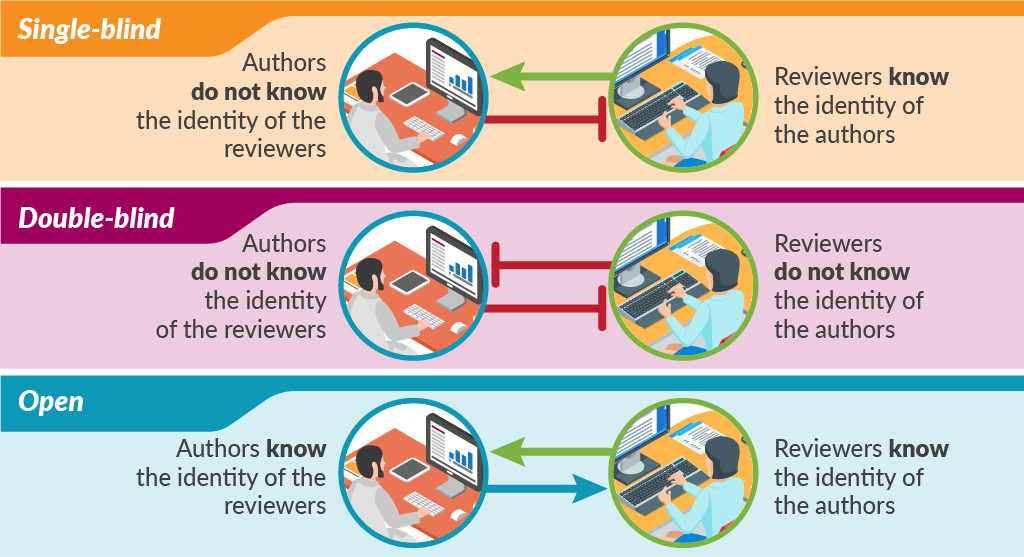
Credit: MPIP Transparency Matters
The journal may also state the typical time for review and revision. Such transparency shows the article has passed expert scrutiny.
Method 3: Evaluating The Article Content
Evaluating the content of an article helps determine if it is peer reviewed. Peer reviewed articles usually have clear, detailed, and reliable information. This section explains key points to check inside the article. These checks help you trust the article’s quality and accuracy.
Author Credentials
Check the author’s background and qualifications. Peer reviewed articles often list authors with academic degrees or research experience. Look for university or research institution affiliations. Experts write these articles, not casual writers. Clear author information adds credibility.
References And Citations
Peer reviewed articles include many references to other studies. They show where ideas and data come from. Look for a list of sources at the end of the article. Reliable articles cite recent and relevant research. This proves the article is based on solid evidence.
Research Methodology
Peer reviewed articles explain how the research was done. They describe the steps, tools, and methods used. This section helps readers understand the study’s accuracy. Clear methods show the research can be repeated and checked. Articles without this section may lack reliability.
Method 4: Consulting Expert Resources
Determining if an article is peer reviewed can be tricky. Expert resources offer reliable help. These resources guide you to accurate answers quickly. They have deep knowledge about scholarly materials. Using expert help saves time and effort. It also improves your research quality.
Library Help Desks
Library help desks are a great place to start. Staff there know how to find peer reviewed articles. They can show you tools to check the article’s status. Many libraries offer in-person and online help. Ask simple questions to get clear answers. They help with both print and digital resources.
Academic Librarians
Academic librarians specialize in research support. They understand scholarly publishing and peer review. Librarians can teach you how to use databases. They explain how to identify peer reviewed journals. Many offer one-on-one consultations. Their advice helps you find trustworthy articles fast.
Online Scholarly Communities
Online scholarly communities connect researchers and readers. Members share knowledge about journals and articles. You can post questions about peer review status. Experienced users often reply with useful information. These forums offer up-to-date advice. They help you learn from real experts worldwide.
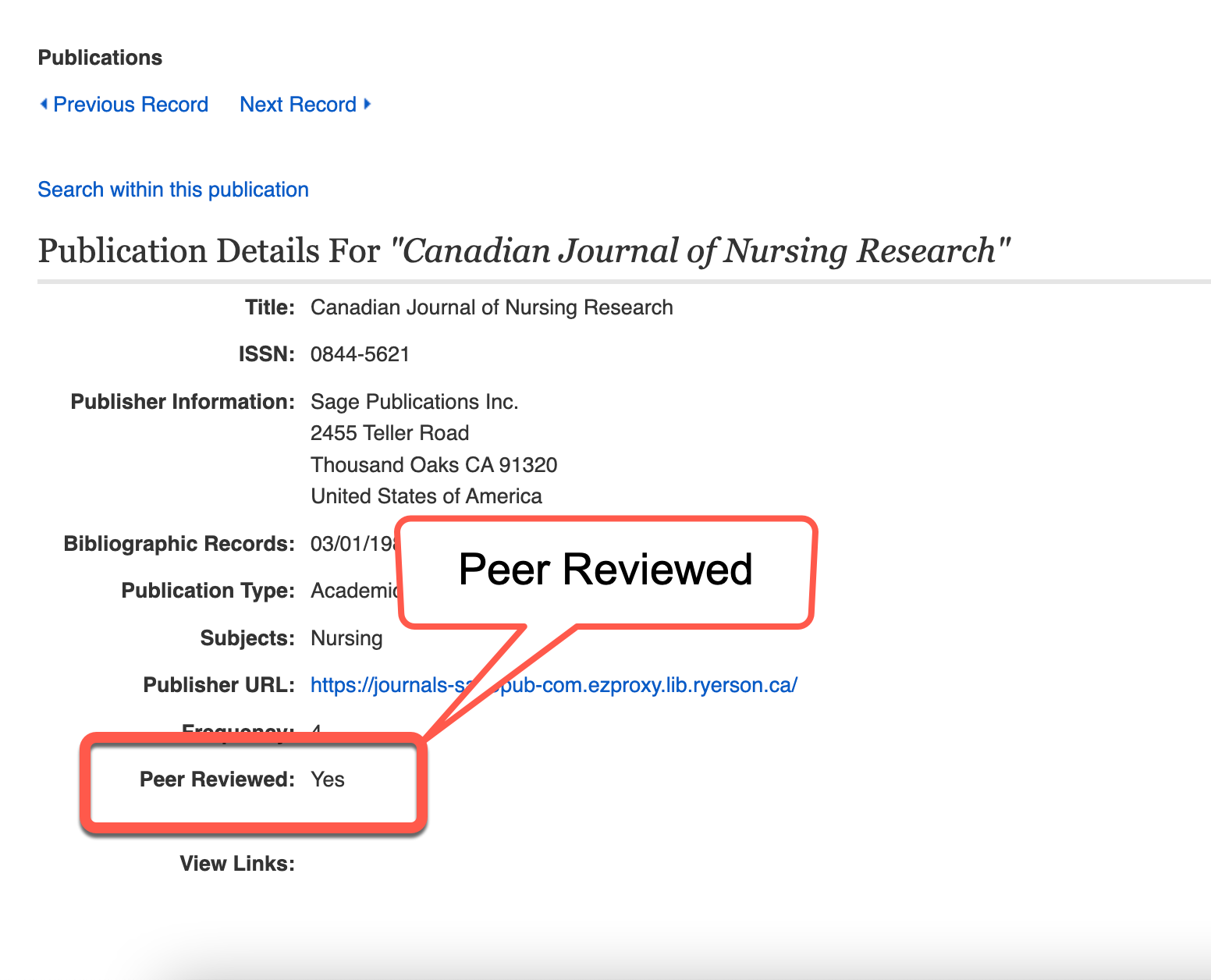
Credit: pressbooks.atlanticoer-relatlantique.ca
Common Mistakes To Avoid
Many readers want to trust the articles they use for research or study. Mistakes can happen when trying to identify peer-reviewed work. These errors may lead to using unreliable sources. Avoiding common mistakes helps find trustworthy articles faster.
Assuming All Journals Are Peer Reviewed
Not every journal uses peer review. Some journals publish articles without expert checks. This means not all content is verified by specialists. Always check the journal’s review process on its website. Do not trust a journal’s name alone. Some journals may look official but lack quality controls.
Relying Solely On Article Appearance
Articles can look professional but still not be peer reviewed. A neat layout or formal writing does not guarantee review. Some websites copy styles of academic journals to appear credible. Always verify by checking the journal’s editorial policies. Appearance can be deceiving and lead to wrong conclusions.
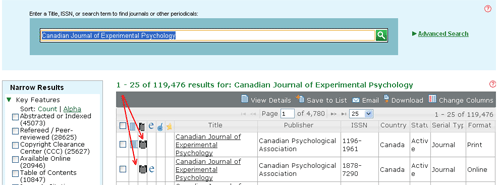
Credit: onesearch.library.utoronto.ca
Frequently Asked Questions
What Defines A Peer-reviewed Article?
A peer-reviewed article is evaluated by experts before publication. This process ensures accuracy, quality, and credibility in academic research.
How Can I Verify If An Article Is Peer-reviewed?
Check the journal’s website or database for peer-review status. Look for terms like “refereed” or “peer-reviewed” in the article details.
Why Is Peer Review Important For Academic Articles?
Peer review validates research methods and findings. It maintains high scholarly standards and prevents the spread of false information.
Can I Trust Articles From Non-peer-reviewed Sources?
Non-peer-reviewed articles may lack rigorous evaluation. They can be informative but should be used cautiously for academic or professional research.
Peer-reviewed articles are more reliable and useful for studies or projects. Always spend time verifying sources before using them. This habit makes your work stronger and more credible. Keep practicing these steps to find quality articles easily.

